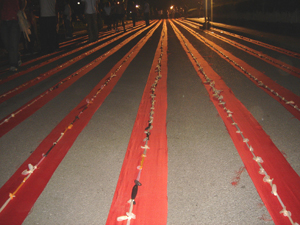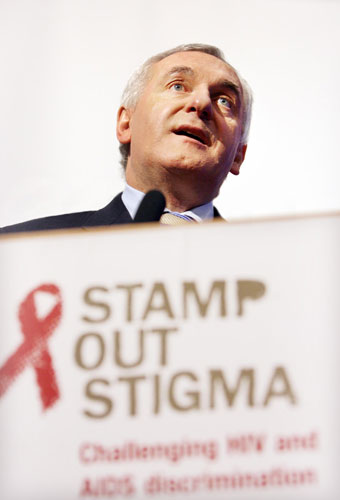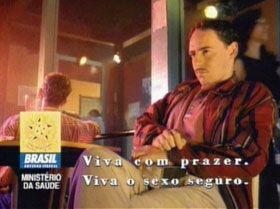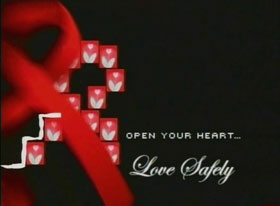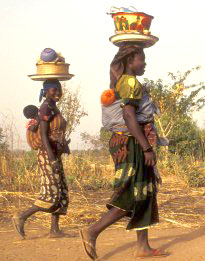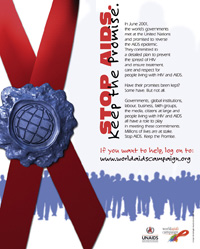NEW YORK, 7 June 2011—As the world marks 30 years of AIDS, the Joint United Nations Programme on HIV/AIDS (UNAIDS) unveils OUTLOOK 30, a book with a compilation of 30 milestones, images, tributes, breakthroughs, art and inspirations in the epidemic’s 30-year history.
“AIDS has united the world, broken the conspiracy of silence, connected the north and the south to find solutions, and forged a social movement,” said UNAIDS Executive Director, Michel Sidibé. “AIDS has mobilized the world to deliver an unprecedented response which has saved millions of lives.”
The book was released ahead of the UN General Assembly High Level Meeting on AIDS taking place in New York from 8-10 June. More than 3000 people are expected to assemble at the meeting, which will be instrumental in moving the AIDS response forward. More than 30 Heads of State and Government will join Ministers, private sector partners, civil society and people living with HIV from 8-10 June, to shape the future of the response to HIV.
AIDS timelines
The special edition of OUTLOOK illustrates timelines on three issues that have shaped the AIDS response—the evolution of access to antiretroviral treatment; HIV/Tuberculosis (TB) and the use of condoms.
The treatment timeline traces the path that has led to a record number of people living with HIV receiving life-saving antiretroviral therapy —6.6 million in 2010, a nearly 22-fold increase since 2001—thanks to the combined efforts of government, civil society and the international community.
The HIV-TB timeline presents major developments in the joint response to HIV and TB. These include the first reports in 1983 of an association between TB and HIV among people living with AIDS in Haiti; a finding 20 years later, in 2003, that only about 3% of people with TB are tested for HIV; and the release of 2009 estimates showing that TB continues to be a leading cause of death among people living with HIV, accounting for about 380 000 deaths.
The condom timeline traces the history of the condom—from ancient Egypt through modern times. “Many people made their own condoms at home before the 20th century,” says historian Aine Collier. “In fact, it was very much a cottage industry, as most condom ‘manufacturers’ worked from their own kitchens.”
Art and AIDS
The book presents a range of posters from around the world that show the diverse visual strategies used over the years to communicate messages on AIDS awareness and safer sex.
It also features a selection of paintings by celebrated New York artist Keith Haring, who died of an AIDS-related illness in 1990, as well as Canadian graphic designer Morgan McConnell and New Delhi-based artists Jiten Thukral and Sumir Tagra. The publication also includes a reproduction of the Keiskamma Altarpiece, an extraordinary message of peace through art which was created by a group of 130 women from Hamburg and neighbouring villages in the Eastern Cape Province of South Africa, an area deeply affected by the AIDS epidemic.
Faces of AIDS
Two chapters in the book bring out the human face of the epidemic. Six activists who have lost their lives to AIDS are remembered through their writings, speeches and recollections by their friends. The book also profiles people living with HIV. These include Olympian Greg Louganis, Miss Positive from Russian Federation Svetlana Izambaeva, a student form Brazil, Micaela Syrina, a Constitutional Judge from South Africa, Edwin Cameron and Member of the House of Lords of the United Kingdom Chris Smith.
“I wanted my story to motivate the people living with HIV to be responsible and to understand that life isn’t over yet,” said Mr Louganis. “Some people don’t think that AIDS has touched their lives. A lot of people saw me at the Olympics and they were cheering for me. All those people cannot say that they have not been affected by AIDS.”
Looking into the future
The book also presents an analysis of current HIV prevention approaches, human rights and AIDS, gender disparities, HIV data, resources available for the AIDS response and recent advancements in the field of science.
“OUTLOOK 30 will inspire a new generation to learn from the lessons of the last three decades and take the AIDS response forward,” said Mr Sidibé. “The book is both a reminder of the past and I hope an inspiration for the future.”




